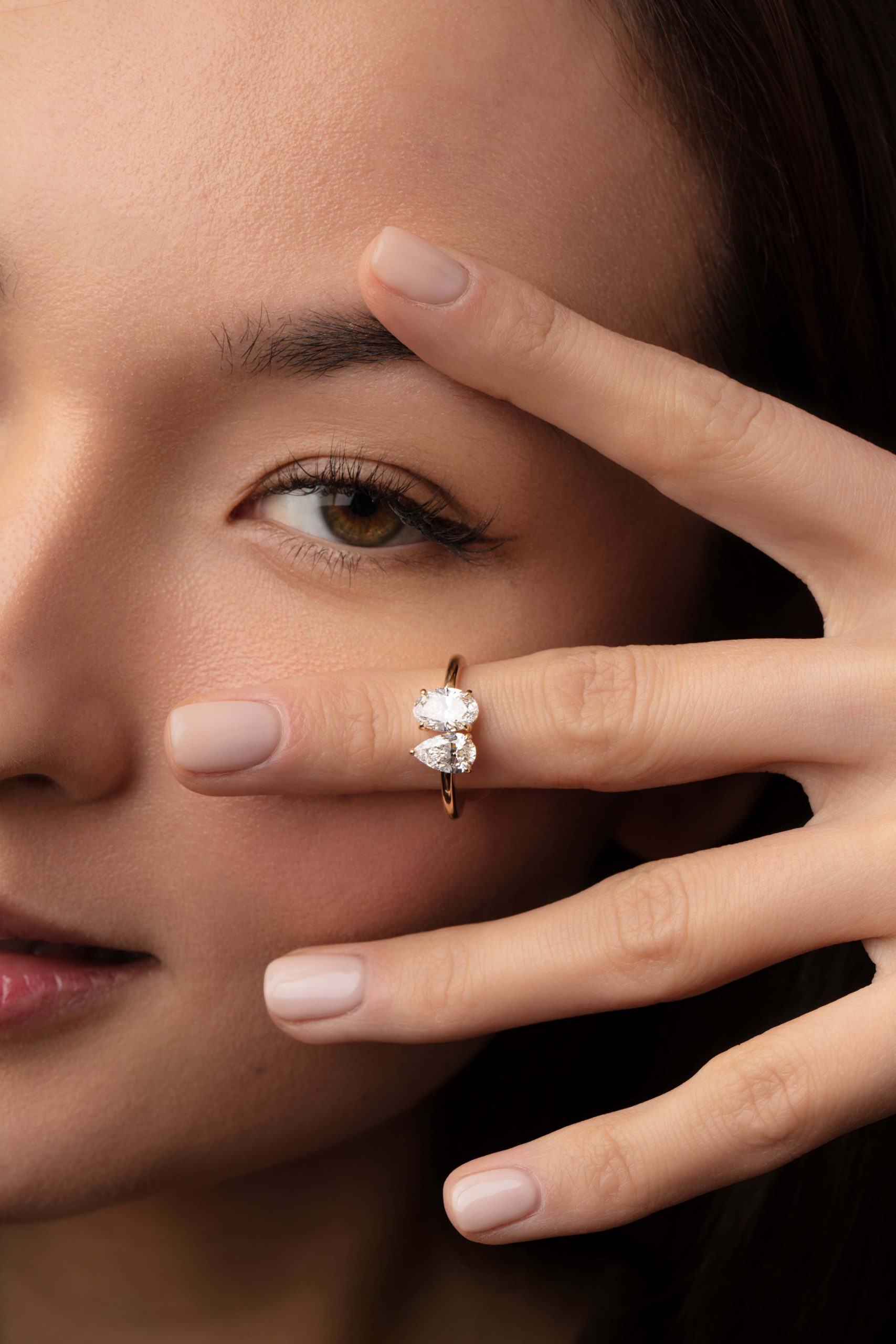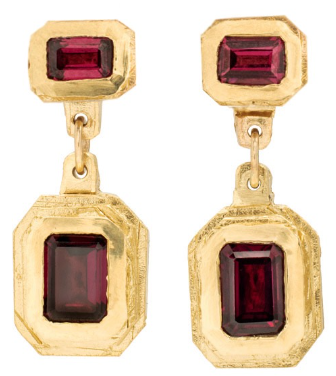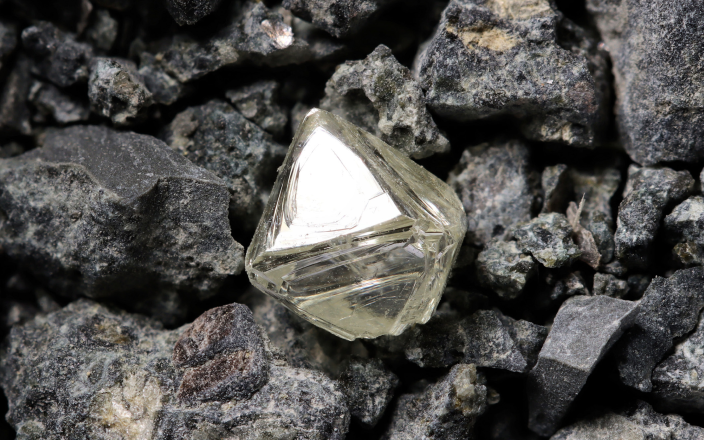By Reut Rothstein, Dialog Co-founder
Can you provide an overview of the current market trends for natural diamonds within the industry?
This is a broad question and can encompass a lot of different things! The industry is experiencing several key trends at the moment. I would say the two main ones are transparency and lab-grown diamonds. For the last several years, but most seriously since the Russian-Ukraine war, there has been a movement towards sustainability and transparent sourcing in the diamond industry.
Consumers and retailers want to know where their diamonds are coming from more than ever. They are keen to understand their supplier’s supply chain and any potential weak points. Secondly, the huge increase in lab-grown diamonds is a trend that is undeniable. Whether you are a retailer who merchandises lab-grown diamonds or not, everyone has felt the effect of this product segment on the natural diamond segment, both in prices and sales.
Similarly, what are the current market trends for lab-grown diamonds?
The market has accepted lab-grown diamonds as a product segment in jewellery that is here to stay. Over the last few years, sales and growth have been very strong. Prices have quite dramatically fallen, so the overall total dollar segment for lab-grown has somewhat plateaued. Today, lab-grown sales are approximately 50 percent of the bridal market in North America, in units.
Retailers are realising in lab-grown that they must find ways to differentiate their product into a branded experience and must sell on more than just price. Generic lab-grown prices have declined significantly and the industry has to do something differently. The suppliers and retailers who are doing things differently in lab-grown, providing a luxury branded experience and focusing on a sustainable and transparent supply chain are managing to hold prices while delivering a luxury experience.

What are the key differences between natural and lab-grown diamonds that people should be aware of?
This is a tricky question because not all lab-grown is created equally, just like not all natural is created equally. Within lab-grown, there are two different growth methods—HPHT and CVD and even within CVD, there are different approaches and methodologies. Different methods produce different products in both look and material. There are some key differences that are emerging between the two products.
Firstly, there is a lot of depth of experience and expertise in how to value a natural diamond against its GIA. This is a little lacking in lab-grown. Although there are, of course, the usual GIA characteristics, there are some attributes unique to lab-grown that GIA does not account for yet like growth lines that affect the brilliance of the diamonds, and tinge, among other things. Of course, there are elements of a natural diamond not listed on the certificate, but there is more experience there. When sourcing lab-grown, it is really important to rely on a trusted partner who is committed to delivering beautiful products and not just selling on the certificate.
Secondly, there is a store of value in the wholesale market for natural diamonds that isn’t there in lab-grown. Natural diamonds’ scarcity in nature has a built-in asset storage mechanism, despite boom and bust cycles in price. However, in our opinion, both products should have space in the industry.
How does HRA approach educating the industry and consumers about these differences?
At HRA, our expertise and experience have always been in natural diamonds. We are a third-generation diamond manufacturer. We had been watching the lab-grown industry grow over the last ten years from the sidelines but had been reluctant to get involved ourselves. This was because we were not fully able to see where the diamonds came from, how they were made, etc. However, a few years ago, we met the scientists and founders of Plasmability, a lab-grown diamond foundry in Austin, Texas. We were so impressed by their operation, we collaborated and invested in their foundry. Their diamonds are marketed under the brand, Clarity Diamond. All this to say, our approach to educating the industry and consumers is always through complete transparency.
We need to be able to show our consumers how and where the diamonds are made and their production operation confidently and transparently. We have brought our retailers for tours at the foundry and have introduced them to the founders so they can educate themselves on the product. We do not trade in generic lab-grown diamonds but have exclusively committed to the diamonds from Plasmability (Clarity Diamond) so that we can provide the most ethical, transparent and innovative product to our customers and for their consumers.
HRA takes an active leadership role when it comes to training and education. We have always believed that it is our responsibility to provide as much information and education as we can, especially to our retail partners. We regularly develop a range of educational materials for our retail partners that are both consumer-facing and for their retail staff. It is our view that retailers should always lead with education. When a consumer walks into a store, we want to do everything we can to ensure they can make an informed decision about what’s best for them.
We are also involved with industry bodies where we can collaborate and provide education in our fields of expertise.
Our colleagues are speakers every year at the AGS Conclave. This year, the topic was providing retailers with practical tips on mitigating their inventory risk. We provide honest feedback about sourcing natural, lab-grown and how retailers can take measures to mitigate the capital risk of inventory. These are just some of the ways we are committed to education in our industry, on natural and lab-grown, but on all topics.
How do sustainability considerations differ for handling natural diamonds versus lab-grown diamonds?
There is a lot of complexity to this question and unfortunately not an easy answer. We do not believe the answer is so clear cut nor that lab-grown diamonds are the sustainable alternative to mined diamonds. On the one hand, natural diamonds are mined from the earth. The mining process requires the miner to disturb Mother Nature and extract the diamonds from deep under the surface or water. Also, diamond mines are usually in very remote locations, requiring materials, labour and trucks to travel to those locations.
After the mine life is over, mining companies are committed to doing everything to repair the ecosystem and leave the environment in the same condition as how they received it. This is truly a high priority. On the other hand, lab-grown diamonds do not require any upheaval to the earth. They are created in a laboratory, leaving nature untouched. However, they require a tremendous amount of power that is also detrimental to the environment. That cannot be overlooked. In many lab-growing facilities in China and India, this is done through coal.
We approach sustainability by researching and collaborating with our suppliers to understand how they approach diamonds. For natural, we partner with mines that are committed to being environmentally sound, like Lucara, De Beers and the mines in Northern Canada. These miners are committed to the highest degree of environmentalism and conservation. Similarly, on the lab-grown side, we partner with Plasmability and the Clarity Diamond brand, an Austin, Texas-based foundry committed to growing lab-grown diamonds with the highest degree of innovation, consideration for the environment and technology. At Plasmability, more than half of their power comes from renewable sources, primarily wind.
At the end of the day, no one has completely solved the question of which diamonds are better for sustainability and the environment. However, as long as each company is committed to these principles and initiatives, then the objective of sustainability is achieved. That has been our approach at HRA. Whether with mined diamonds or lab-grown, we do our research and due diligence and only partner with the companies that are transparent and make us proud to call us their partners.

Could you share insights into HRA’s practices for ensuring ethical sourcing within the natural diamond trade?
On the natural diamond side, the HRA Group sources both rough diamonds that we manufacture at our factories and polished diamonds. In rough, as mentioned above, we ensure ethical sourcing by only dealing with the primary miners, who all set an example in the diamond industry on sustainability and best practice principles and are all certified by the Responsible Jewellery Council. Similarly, when sourcing polished diamonds, the HRA Group only sources diamonds from companies that are RJC Certified and practice best practices.
To be certified by the Responsible Jewellery Council is a very high standard. On-site audits are conducted by third-party auditors to ensure the facility, operations, human resources, environmental policies, sustainability, human rights and employment standards all adhere to the highest principles. Further, HRA only works with companies that are signatories to the World Diamond Council and can provide guarantees on the diamonds that all are sourced from legitimate sources, including the most recent guarantee on the absence of all Russian diamonds.
What are the primary advantages and disadvantages of both natural and lab-grown diamonds?
This is also a complex question without a distinct answer. Diamonds are an emotional purchase. They signify love and commitment to each other and also the positive emotions that come from self-purchase—independence and self-love. Therefore, these emotions are completely unique to each consumer and more important, must reflect what they believe—what are their values? what makes them happy? The most important thing is that consumers have a trusted retailer who can educate the customer to allow them to make the right purchase that aligns with their values and feels authentic to both the customer and the retailer.
How do you anticipate the competition between natural and lab-grown diamonds will impact the industry in the future?
It appears the segment most affected by the growth of lab-grown diamonds has been the I1/I2 category in natural, merchandised by the large box chains like Costco or Walmart, and also some independents. For the most part, lab-grown has not been a product substitute for the higher-end diamond market. However, this may also not be a bad thing. Diamonds and diamond jewellery are a luxury purchase. A consumer with a $5000 retail budget was relegated to the one carat I one segment now has many options and can opt for a much higher-end, larger beautiful lab-grown diamond. Furthermore, the growth of lab grown diamonds has pushed the natural market into more transparency.


Are there specific market segments or regions where individuals are showing more interest in lab-grown diamonds over natural ones?
The most popular regions for lab-grown continue to be the United States and the United Kingdom, where acceptance and growth have been quite tremendous. Lab-grown diamonds seem to be less popular in Australia, China, and Asia as a whole for now. Lab grown is also more popular among younger consumers while more mature consumers may still prefer natural. This may be because they are higher income earners or simply what they are used to.
How does HRA approach marketing lab-grown diamonds compared to natural ones?
At HRA, we make sure all of our interactions are founded on our values of transparency, reliability and candour. Therefore, we take the same approach when marketing our natural diamonds and our lab grown diamonds. Whether lab-grown diamonds or natural diamonds, we focus on what product, solution and service the customer is looking for and make sure we can best provide those to our customers.
We don’t necessarily focus on selling or marketing our products but focus on our customers’ needs and desires, and making sure we can provide the right product for them. In lab-grown, we focus on the attributes of Clarity Diamonds that we know we can always stand behind 100 percent—they are all US-grown in Austin, Texas, they make a beautiful product, all CVD uninterrupted growth producing no growth lines, they are ethically and sustainably produced by an amazing team of scientists and founders.
We offer tours of the foundry and like to connect our retailers with the founders so they can answer all of their questions on how these diamonds are produced. In natural, we source from the best manufacturers, including our own production, and have the strictest QC measures in the industry. Our retailers know when they source products from us, they can purchase sight unseen as our QC measures are strict and we have basically zero rejection.
As long as we are authentic to our company values, we approach selling these products in the same manner—being of service to our customers, being transparent and helping their customers make the best decision for them.

Finally, what guidance would you offer professionals when navigating between natural and lab-grown diamonds within their business operations?
I have a couple of words of guidance here. Firstly, wherever you are in the supply chain, I think it’s very important for professionals and retailers to operate their businesses or merchandise their stores based on their own personal values. The relationship between the retailer and customers always needs to be a genuine one.
Rather than chasing profit dollars, I think we all need to focus on trying to service our customers in the most genuine and authentic way possible. If a retailer doesn’t feel good about lab-grown, they shouldn’t merchandise it because the consumer will be able to tell and not feel good about their purchase. Alternatively, if a retailer feels confident in the lab-grown he or she is selling, can answer their customer’s questions and knows the subject confidently, this breeds trust and the customer will feel confident in their purchase.
Secondly, I would suggest to embrace transparency. Only merchandise the products you have researched, feel confident about, and feel genuinely good about selling. Build strong partnerships with your suppliers, visit their factories and offices and see where your diamonds come from. Your best suppliers may not be the cheapest one and that is totally acceptable.
Lastly, invest in education—in your team, in your customers, suppliers and in yourself. Stay up to date on technology and how it can add value and efficiency to your business. I think if professionals stay true to most of this, they will have success in this industry.


